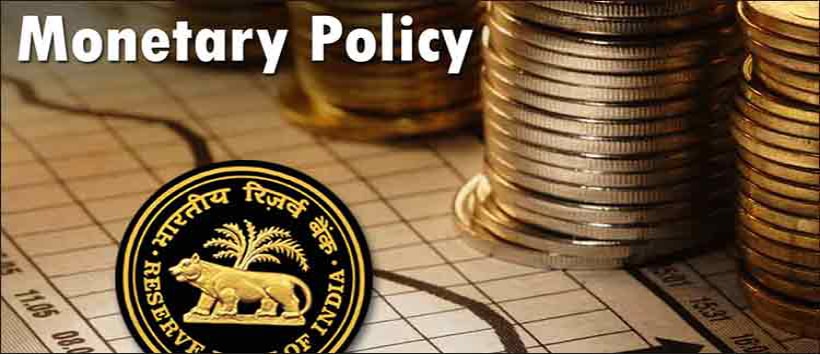
RBI Monetary Policy, 2020
About Monetary Policy
It is the policy formulated by the Reserve Bank of India in 2020 related to money matters of the country. The policy also takes into account the distribution of credit among users as well as the rate of interest on borrowing and lending. Since India is a developing country, the monetary policy is significant in the promotion of economic growth. The monetary policy in India is formulated by the Reserve Bank of India and relates to the monetary matters of the country. The policy involves measures taken to control inflation, regulate supply of money and cost of credit in the economy. The various instruments of monetary policy include variation in bank rates, other interest rates, supply of currency, etc.
Objectives Of Recent Monetary Policy Of RBI
- Controlling imports and exports:
- Monetary policy helps industries to get a loan at a reduced interest rate, which means they can substitute imports by export-oriented units and, in turn, increase exports.
- Promotion of savings and investments:
- Monetary policy can impact the savings and investment of the people. A higher rate of interest will result in greater investments and savings, thereby maintaining a healthy cash flow within the economy.
- Managing business cycles:
- There are two main stages of the business cycle – boom and depression. The monetary policy is one of the most efficient financial tools that can help to control the boom and depression period of business cycles by managing credit distribution and supply of money in the economy.
- Employment generation:
- Monetary policy can lead to reduced interest rates, which means small and medium enterprises (SMEs) can easily secure a loan for business expansion. This means more employment generation.
- Development of infrastructure:
- The monetary policy by RBI allows concessional funding for the development of infrastructure within the country.
- Developing and managing the banking sector:
- The central bank is responsible for managing the entire banking industry. RBI also instructs other banks using the monetary policy to establish rural branches for agricultural development wherever required. Additionally, the government has also set up cooperative and regional rural banks to help farmers receive the financial aid they require in no time.
Let Us Have A Quick Review
- On 27th March 2020, RBI has cut the Repo Rate by 75 bps to 4.40% from 5.15% earlier.
- Reverse Ratio has been cut by 90 bps to 4% and Cash Reverse Ratio (CRR) by 100 bps to 3%. This has been done to mitigate the impact of COVID-19.
- RBI has also announced that the banks, NBFCs and housing finance companies are permitted to allow their customers a 3-month moratorium in repayment of EMIs.
- This means that the borrower may not pay any EMI for 3 months subject to bank’s approval. This delay in EMIs will not have any negative impact on the credit score.
| Indicator | Current Rate | Earlier Rate | Impact |
| Cash Reserve Ratio (CRR) | 3% | 4% | Higher the CRR, lower the amount of money banks can lend out or invest. So, when the CRR is higher, lower would be the liquidity and vice versa. It is not necessary that a hike in the CRR would lead to a hike in home loan interest rate. But, as a reduce in rate in the CRR increase the supply of credit, when the RBI reduce the CRR, banks would reduce home loan interest rates if the demand for credit does not fall proportionately. |
| Statutory Liquidity Ratio (SLR) | 18.50% | 19.50% | When the SLR is high, banks have less money for commercial operations and hence less money to lend out. When this happens, home loan interest rates often rise. When the SLR is low, similarly, home loan interest rates are likely to fall. |
| Repo Rate | 4.40% | 5.15% | Increase in funds for loans and Reduce in Loan EMI |
| Reverse Repo Rate | 4% | 4.9% | The purpose of this measure, relating to reverse repo is to make it relatively unattractive for the banks to passively deposit the funds with the RBI and instead to use these funds to lending to the productive sectors of the economy, |
| Marginal Standing Facility Rate | 2% | 3% | It should provide comfort to the banking system by allowing it to avail an additional Rs 1.37 lakh crore of liquidity under the LAF window |

